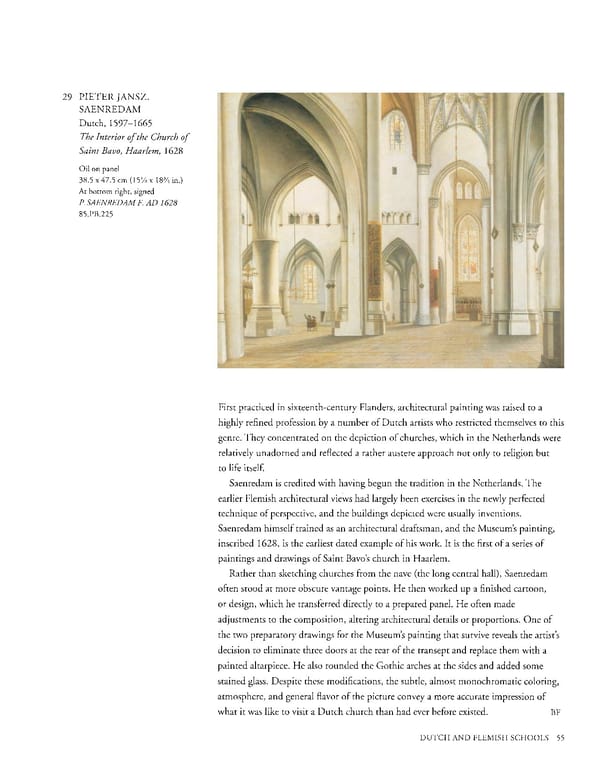29 PIETER JANSZ. SAENREDAM Dutch, 1597-1665 The Interior of the Church of Saint Bavo, Haarlem, 1628 Oil on panel 38.5 x 47.5 cm(15 x 18¾ in.) At bottom right, signed P. SAENREDAM F. AD 1628 85.PB.225 First practiced in sixteenth-century Flanders, architectural painting was raised to a highly refined profession by a number of Dutch artists who restricted themselves to this genre. They concentrated on the depiction of churches, which in the Netherlands were relatively unadorned and reflected a rather austere approach not only to religion but to life itself. Saenredam is credited with having begun the tradition in the Netherlands. The earlier Flemish architectural views had largely been exercises in the newly perfected technique of perspective, and the buildings depicted were usually inventions. Saenredam himself trained as an architectural draftsman, and the Museum's painting, inscribed 1628, is the earliest dated example of his work. It is the first of a series of paintings and drawings of Saint Bavo's church in Haarlem. Rather than sketching churches from the nave (the long central hall), Saenredam often stood at more obscure vantage points. He then worked up a finished cartoon, or design, which he transferred directly to a prepared panel. He often made adjustments to the composition, altering architectural details or proportions. One of the two preparatory drawings for the Museum's painting that survive reveals the artist's decision to eliminate three doors at the rear of the transept and replace them with a painted altarpiece. He also rounded the Gothic arches at the sides and added some stained glass. Despite these modifications, the subtle, almost monochromatic coloring, atmosphere, and general flavor of the picture convey a more accurate impression of what it was like to visit a Dutch church than had ever before existed. BF DUTCH AND FLEMISH SCHOOLS 55
 Masterpieces of the Getty Museum: Paintings Page 55 Page 57
Masterpieces of the Getty Museum: Paintings Page 55 Page 57